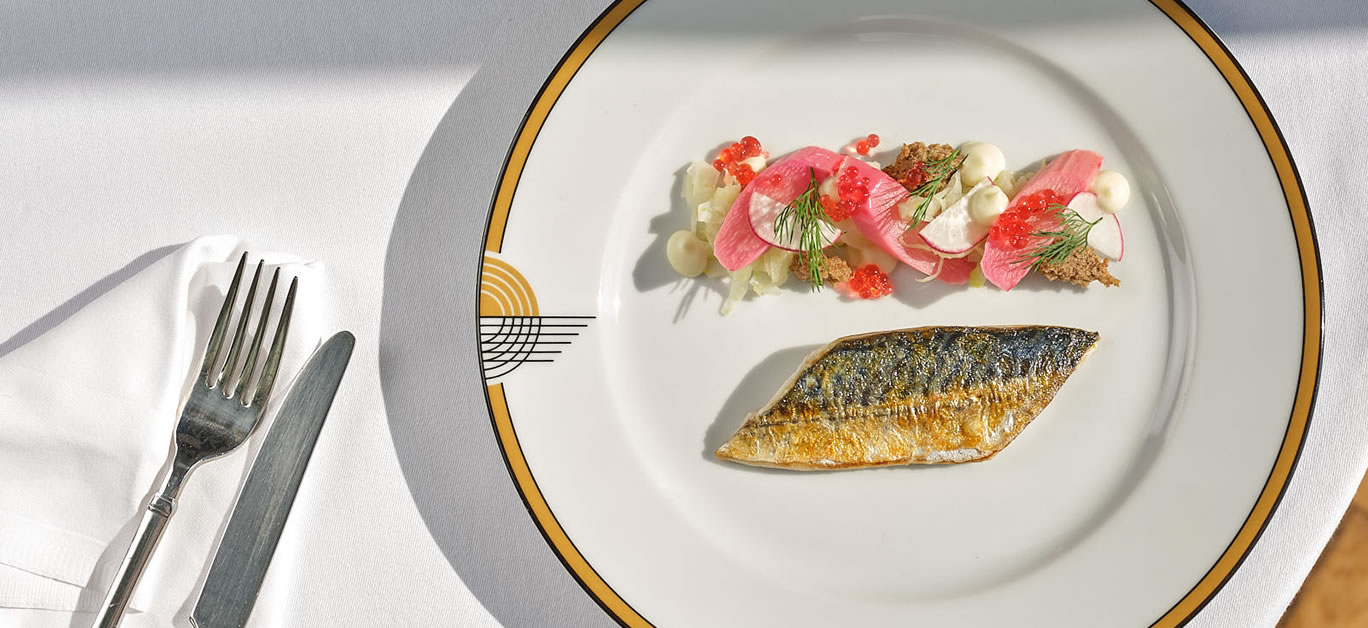During his time at the Art Deco inspired south Devon hotel, Tim has overseen the culinary operations at it’s four distinct dining experiences, including the stunning eight-course tasting menu of the Grand Ballroom and the acclaimed Nettlefold seafood restaurant.
After 17 years, executive chef Tim Hall has decided to leave the luxury Burgh Island Hotel to spend more time with his family, so as a parting gift, Burgh Island and Tim have created a fabulous cookbook to leave as his legacy, with a collection of his favourite recipes on show.
The book, aptly titled Burgh Island Food: A Burgh Island Cookbook, offers a selection of delicious recipes from the kitchens at the Burgh Island Hotel, from simple ways to uplift your everyday cooking, to more ambitious dishes and ingredients.
We sat down with Tim to find out more about the book as well as his sustainable ethos to cooking.
Can you tell us a little bit about yourself, including where you are today, professionally, and what got you here?
I am a chef and have been for 21 years, most of which have been spent at the amazing Burgh Island Hotel. I actually started working here when I was 20, as a pastry chef, before moving elsewhere – but it wasn’t long before I was drawn back to the island, like so many of its guests that I have come to know over the years.
What or who inspired you to become a chef?
Quite simply, a love of food that I have had since I was a child. I am from a big family, so cooking and mealtimes were always big occasions that generated a great deal of excitement. I especially loved baking cakes and other sweet treats, hence my origins as a pastry chef.
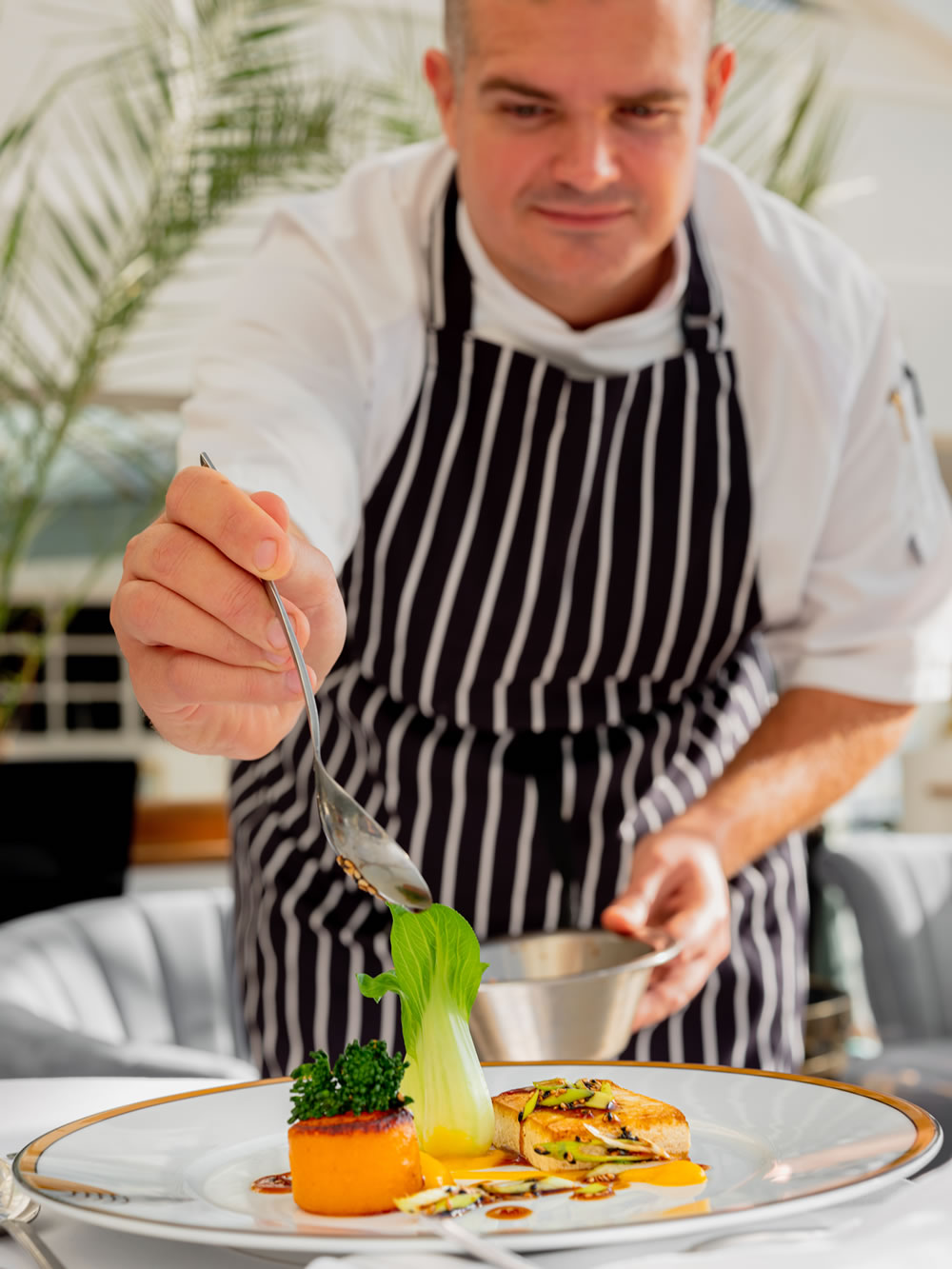
Why have you written this book?
On the one hand, the idea really took off in the first lockdown. A previous owner of the hotel had suggested it, but it was only in lockdown that Penny, managing director of the hotel management company Inntelligence, gave me a call and asked if we could make it happen.
On the other hand, I have really been writing this book throughout my time at Burgh Island. It is a declaration of affection for the hotel and my favourite dishes that I have produced there. It took a long time to write and compile all the recipes, but it was well worth it in the end.
Burgh famously sources most of its ingredients locally. Did this play a part when concocting the key recipes for this book?
Yes, definitely. As a Devon lad, born and bred, I have always been passionate about supporting local people by using local produce. Roughly 80 per cent of our ingredients are sourced within a 30-mile radius of the island, and some have to travel as little as 15 minutes before arriving in the kitchen.
These local products are more easily traceable, so you know where they have come from and you can be sure of their quality. In that sense, this book acts as a well-deserved advert for the great local produce available in the Westcountry. Sourcing ingredients locally, of course, is also beneficial for the local economy and better for the environment, so it’s a no-brainer.
Can you tell us more about the contents, the recipes in the book? What inspired them and in what way did the guests influence your menu choices?
Ultimately, the dishes are inspired by my time at Burgh Island. All the recipes come from either the Grand Ballroom, the fine dining restaurant where guests can enjoy numerous courses of fantastic cuisine, or the Nettlefold restaurant, which serves our finest seafood specialities. The ones that made it into the book are the ones that found a place closest to my heart over the years, though it was really tough deciding which ones to choose and which to leave out.
Guests have played a crucial role because I have always been cooking to please them, trying to create dishes that they will enjoy most. So, for something to become one of my favourite dishes, it has to have been one of their favourites too.
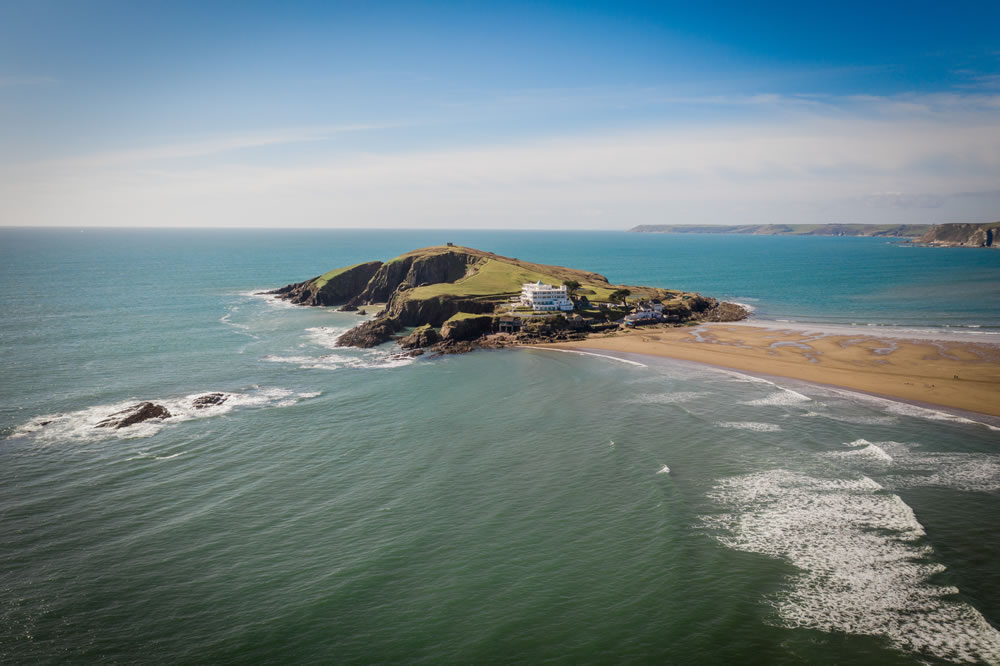
What are your favourite dishes in the book?
This is a tough one, but my favourite is probably the peanut butter parfait, with banana bread, banana purée, and salted caramel peanuts. First of all, it looks absolutely amazing. Second, the peanut butter and banana make an unbeatable combination.
Do you view this as your legacy after so many years working on the island?
Well, it is part of my legacy but part of the island’s legacy too. It is still the Burgh Island Cookbook, even though I am moving away to spend more time with my family now that I’ve finished it. As far as parting gifts go, I’m very pleased with this one and I am happy to leave it as a sign of my affection for Burgh Island.
Who has been your biggest influence to get you to where you are today?
The chefs around me, whether they have been working with me or for me. Even the young lad who has just started learning in the kitchen can teach you something, so I’m always on the lookout for new tips and techniques. Even when you become a head chef, you should never want to stop learning or improving because people are doing new things with food all the time and it is a privilege to experience even a small part of that.
What’s your signature dish?
In my decade and a half at the hotel I have probably become best known for my fish dishes, which was perhaps inevitable given that our kitchen is literally surrounded by the sea (at least at high tide). From bass to halibut, we use whatever local fish is available, and I love to pair it with spinach, capers, and a butter sauce. This became a popular dish in the Grand Ballroom, particularly for the addition of saffron, which can elevate many a dish.

What are the most important considerations when crafting your menu? Do your personal preferences influence the menu at all?
Absolutely. You have to let your preferences guide the crafting of a menu. If you don’t believe in the dishes you are making, then you won’t put your heart and soul into them, and guests will be able to tell. I am fortunate that my passion for my food has always shone through, and Burgh Island’s guests have been very complimentary over the years. My palette tends to reflect what most people like – I don’t experiment too much with outlandish flavour combinations!
How would you describe your cooking style?
I would describe it as free. I am not pigeonholed into any specific style or cuisine. If I like a flavour, I will put it into a dish. As long as the flavour works, then it doesn’t matter what ‘style’ it may or may not fit into. How it tastes is the most important thing.
With that in mind, if I was pressed to name a style that I identify with most, it would probably be ‘modern British’. People often think that British cuisine is little more than fish and chips, but nowadays it is characterised by the sheer variety and borrowings from cuisines around the world. It’s this amalgamation of different genres of cooking, and the possibilities that it unlocks, that I find exciting.
Do you have a favourite time of year or set of ingredients that you look forward to working with?
Wild garlic, without a doubt. It usually comes in around February or March, when I’ll be out in the woods near our house looking to forage some. I can even get it as early as January if the woods have a particularly long season, but even in a short season it is well worth the wait.
Slightly later in the year, spring is great because you get all the berries coming through, so you can use them for all your puddings. You get the best lamb and, of course, fish at this time of year too. I cannot wait for spring to arrive!
What is your favourite ingredient to create with?
Chocolate. It’s great for sweet dishes, but it can also go into main courses, making sauces much richer. One of my personal favourites is a seafood dish that includes apple and caramelised white chocolate. Trust me, it will change the way you think about using chocolate in cooking.
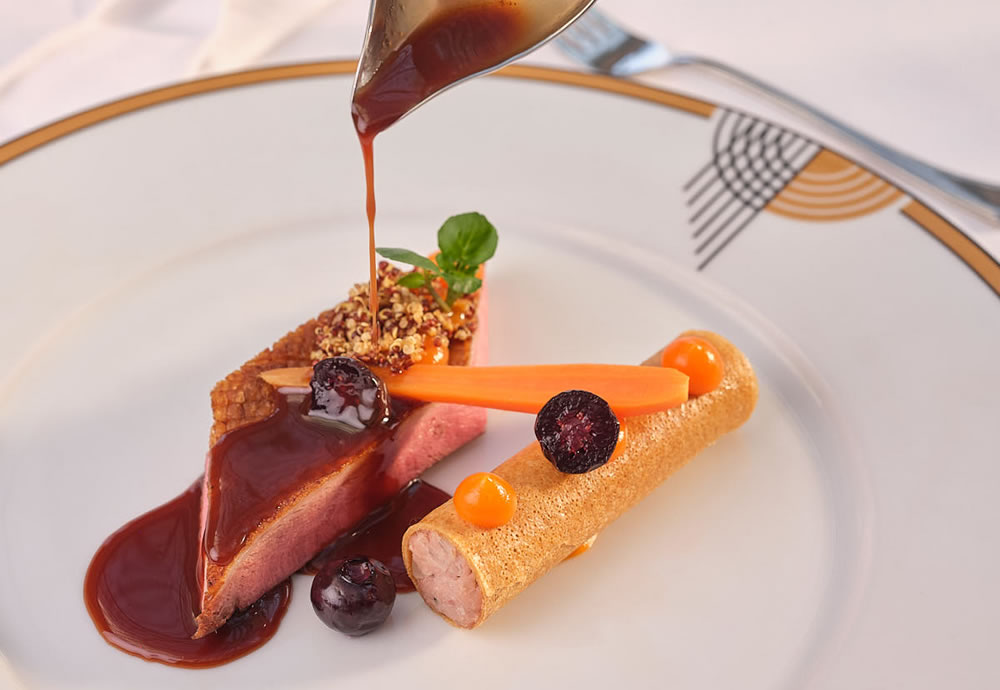
What would you be doing if you weren’t a chef?
When I was younger, I always wanted to be either a chef or a vet. So, I suppose I would be a vet!
What is your favourite dish to cook at home?
Nachos! It can be difficult to find really good nachos in restaurants. It’s much better to bring together homemade salsa, guacamole, and something like pulled pork too. This is a favourite in our house, and I’m sure we aren’t alone.
When are you happiest?
I am happiest when out walking with my family. I love them and we all love being around nature. I am also very happy when developing dishes. And after a crazy and sometimes stressful shift, when everything has gone well in the end, there is a real buzz afterwards that, as far as feelings go, is difficult to beat.
When you’re not in the kitchen where can you be found?
Outside, in nature, with my family, we often go for walks in Cornwall. Or on my bike, I really enjoy mountain biking.
What’s your favourite takeaway or comfort food?
Now, this goes against everything that I stand for as a chef, but I would have to say…KFC. Every now and then, it can genuinely be very nice.
Where is your favourite place to dine?
Locally, I would say Boringdon Hall. They do such great food and I’m sure they will one day achieve a Michelin star. An honourable mention must go to the Gidleigh Park restaurant, on the edge of Dartmoor, which is also excellent.
Internationally, I would say Brittany. The seafood there is amazing. I worked out there for a while after college, and on our days off we would eat out at all the local restaurants. I have taken my wife back there since, and we have gone to all the same places. I wouldn’t need much of an excuse to go again in future, to be honest.
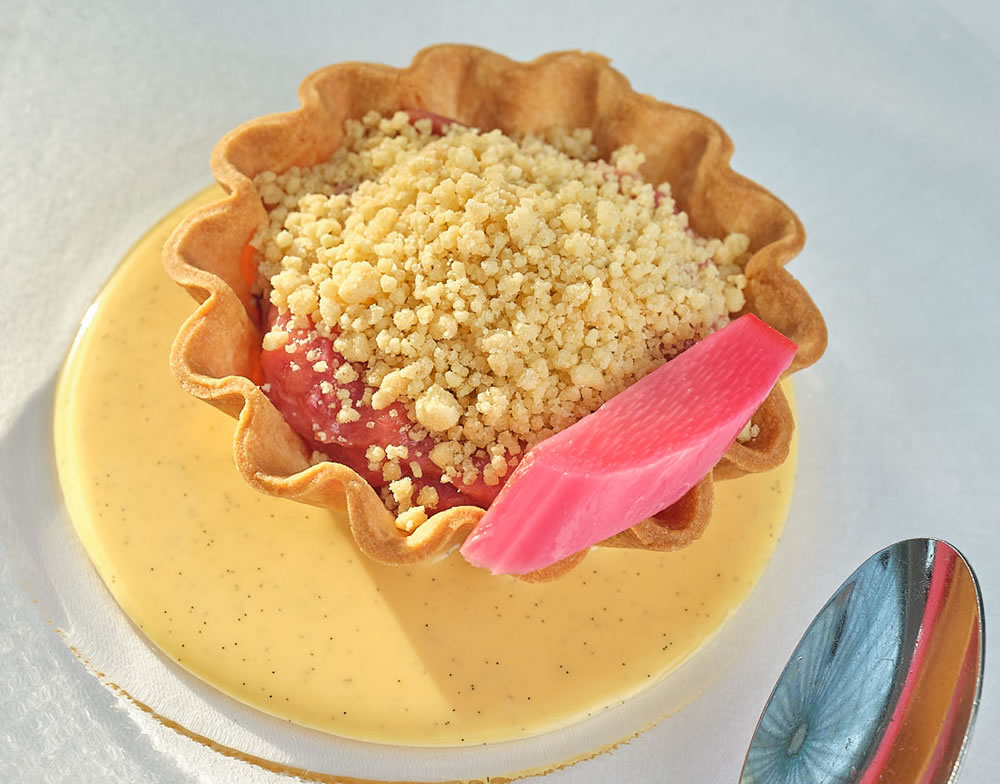
What do you think is the most overhyped food trend?
Molecular gastronomy was exciting but it made food leave an aftertaste that just didn’t seem right. I think people were probably using it to the extreme. It is better now that there isn’t so much hype around it so, yes, I think that was one trend that people definitely went overboard with.
Another trend that I have now stopped is cooking sous vide. I used to do it all the time, but it is damaging for the environment because of the amount of plastic it wastes. And on a more basic level, it just did not work all the time, often resulting in food having the wrong texture. Since we stopped cooking sous vide at Burgh Island, it has been great to see just how much waste we have saved, and we have been innovating new ways to cook more sustainably ever since.
How did the Covid-19 lockdown restrictions affected your work?
With the whole hospitality industry virtually going into hibernation during lockdown, I was off work and had more time to reflect and spend time with my family.
Since coming out of lockdown, Burgh Island has had its busiest two summers ever, and the staff have really had to pull together. But this is a brilliant community of people – a family, really – and I couldn’t have asked for a better group of people to have spent the last 15 years working with.
What differences do you find working with local produce as opposed to non-local produce in terms of what you can create and flavour?
When you source locally, I think you can afford to be more creative in your dishes because you have a much better understanding of the ingredients’ quality and where they have come from. I have built good relationships with local suppliers who rear ducks, chickens, and even guineafowl, and it makes such a difference having that personal relationship with a supplier. You just don’t get that if your ingredients are mass produced.
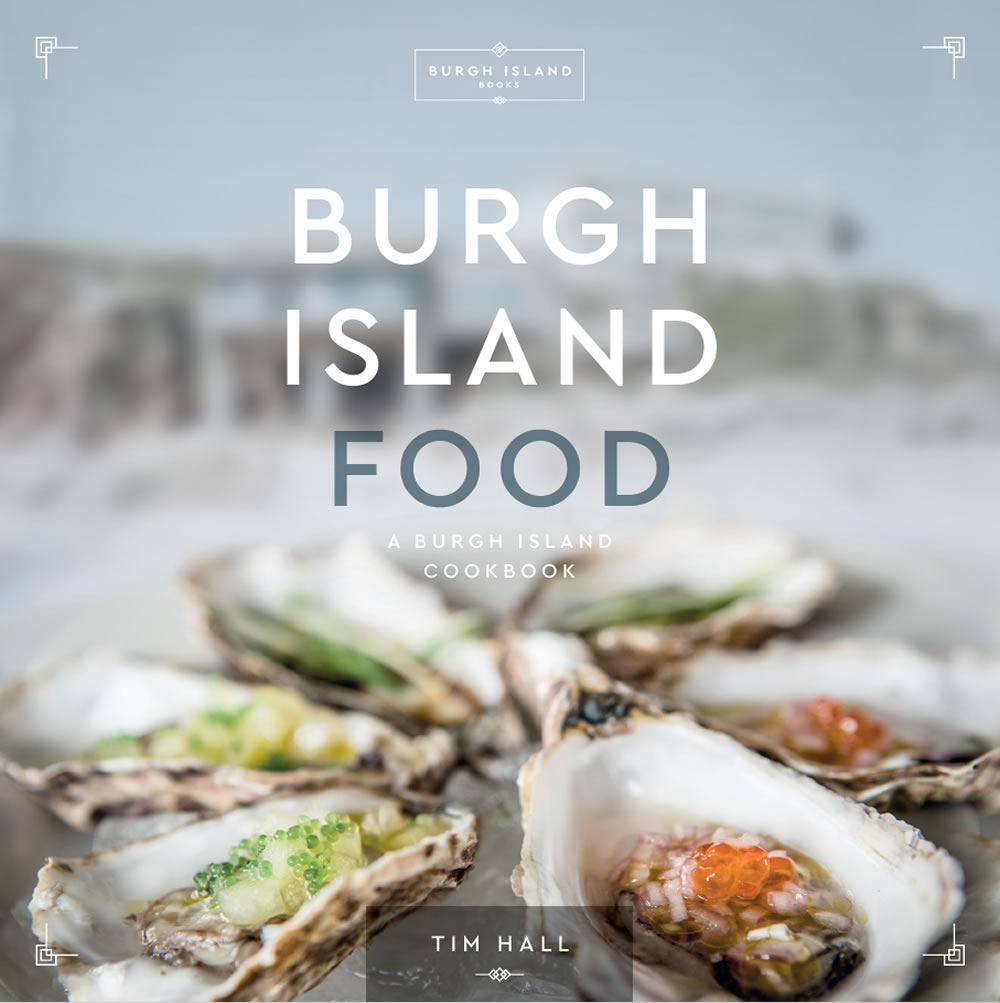
How do you go about menu planning? What’s the process from picking the ingredients to getting them fresh into the kitchen and into dishes?
First, you need to look at your food calendar. What season is it, and what is available?
In winter, a good main dish is venison or game. Then you can think about what vegetables are available, which in winter is mostly root vegetables such as celeriac and parsnips, but cavolo nero and kale are also good at this time of year. Then you think about the starch: maybe potato, pearl barley, or spelt.
Sometimes it is a case of trial and error. Food never stands still, so you always have to think, ‘How can I improve this?’ Dishes are constantly evolving. One chef might plate the food in a different way and you might decide that you really like it. Again, this goes back to learning from those around you at all times.
What’s your favourite flavour combination?
Salt and caramel. I love the salted caramel movement. It’s a standard combination really, but there is great scope for creativity – in the book, for instance, there is a dark chocolate fondant with miso caramel and popcorn ice cream.
Would you like to add anything?
I would like to say a huge thank you to everyone involved in the making of this book, and to the people who showed me around the places we went to and took all the photos. I love food photography, and it was great to have a team behind the book to make sure it looked as amazing as possible. I think we achieved that, so I really hope that people like it. If they enjoy making the dishes as much as I enjoyed making the recipes, then I’ll be happy.
Factbox
Address: Bigbury-on-Sea, Kingsbridge TQ7 4BG
Phone: +44 (0)1548 810514
Email: reception@burghisland.com
Website: burghisland.com












